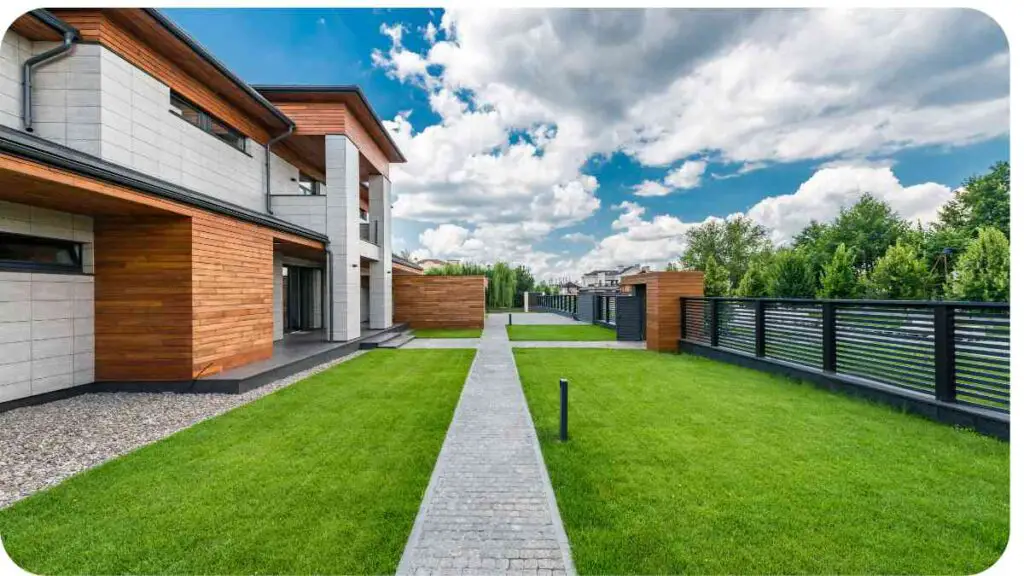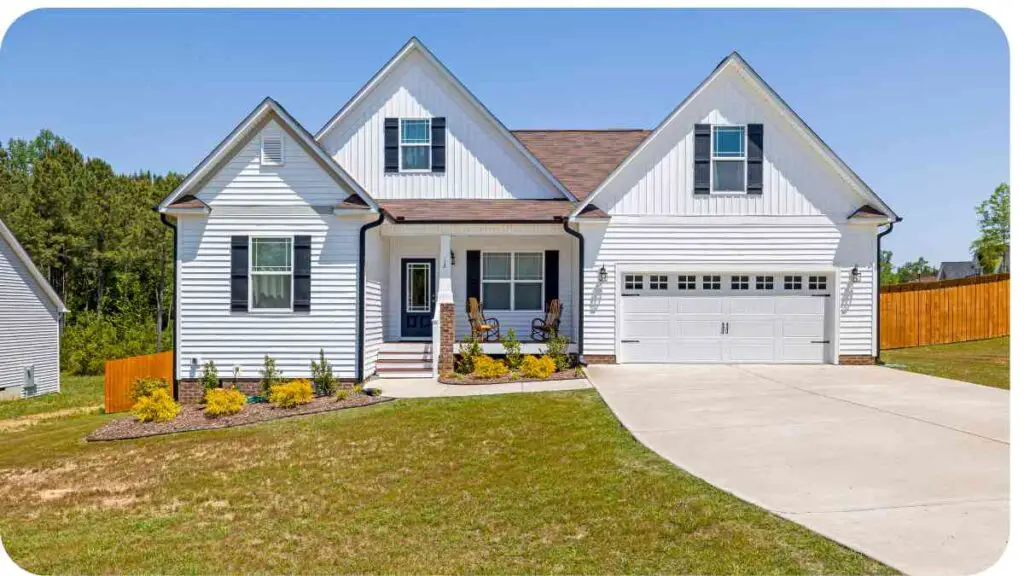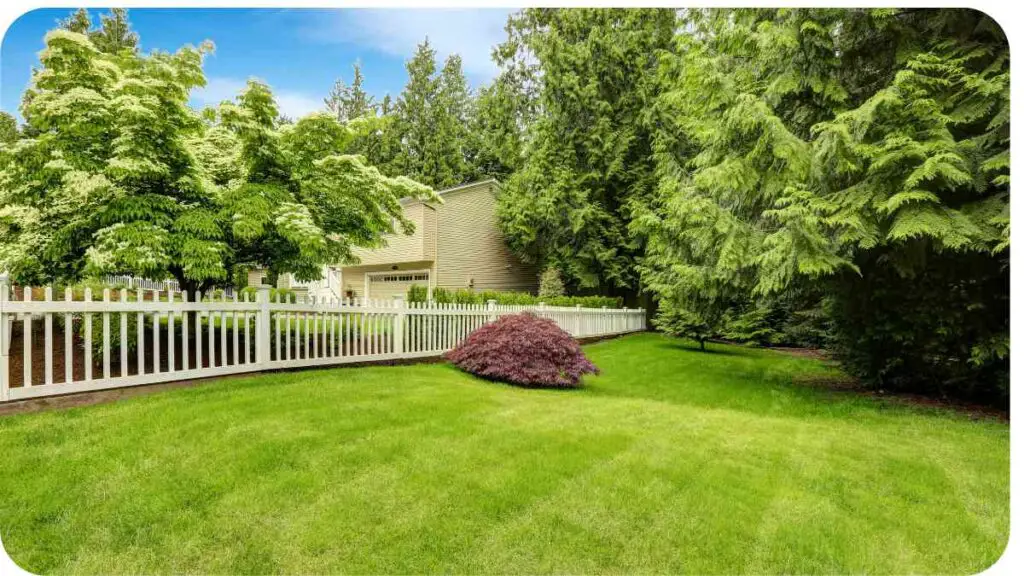Thinking about adding a fence to your front yard but unsure about the costs involved? Front yard fencing can enhance the aesthetic appeal of your home, provide security, and even increase property value.
However, the cost can vary significantly based on several factors. In this article, we’ll break down the various elements that influence front yard fencing costs, explore different types of fences, and provide tips on how to save money without compromising on quality.
| Takeaways |
|---|
| Front yard fencing costs vary based on material, length, labor, and additional features. |
| Wood, vinyl, metal, composite, and chain link are common fencing materials, each with different costs. |
| DIY installation can save on labor costs, but professional installation ensures quality and warranty. |
| Consider maintenance costs and local regulations when planning your front yard fencing project. |
| Choose the right fence that meets your needs, budget, and complements your home’s aesthetic. |
Why Consider Front Yard Fencing?

Front yard fencing offers numerous benefits beyond just adding to your home’s curb appeal. It can provide privacy, keep pets and children safe, and deter trespassers. Additionally, a well-chosen fence can complement your home’s architecture, creating a cohesive and attractive exterior. But before diving into the types and costs of front yard fencing, it’s essential to understand what factors affect these expenses.
Curious about the cost to resod your front lawn? Here’s how much it could cost and what factors to consider for your project.
Factors Influencing Fencing Costs
Material
The material you choose for your fence is one of the most significant factors affecting the overall cost. Different materials vary in price, durability, and maintenance requirements.
Table: Cost Comparison of Different Fencing Materials
| Material | Average Cost per Linear Foot | Durability | Maintenance Level |
|---|---|---|---|
| Wood | $12 – $27 | Moderate | High |
| Vinyl | $20 – $40 | High | Low |
| Metal (Aluminum, Steel, Iron) | $20 – $35 | Very High | Low |
| Composite | $25 – $45 | High | Low |
| Chain Link | $10 – $20 | Moderate | Low |
Length and Height
The size of the area to be fenced and the height of the fence significantly impact the cost. The longer and taller the fence, the more materials and labor will be required.
Labor Costs
Labor costs can vary based on the complexity of the installation, the type of material, and local wage rates. Hiring a professional might be more expensive, but it often ensures a better-quality installation.
Geographical Location
Where you live can influence the cost of materials and labor. Urban areas tend to have higher costs compared to rural areas due to differences in the cost of living and availability of materials and contractors.
Additional Features
Including gates, decorative elements, or special coatings can add to the overall cost. While these features can enhance the look and functionality of your fence, they also come with additional expenses.
Types of Front Yard Fencing

Wood Fences
Wood fences are a classic choice, known for their natural beauty and versatility. They can be stained or painted to match your home’s exterior. However, they require regular maintenance to prevent rot and insect damage.
Wondering how much sun your front yard gets? Discover the sun exposure and its impact on your landscaping and gardening plans.
Vinyl Fences
Vinyl fences are durable and low-maintenance, offering a clean and modern look. They are resistant to weathering and do not require painting or staining, making them a popular choice for homeowners looking for minimal upkeep.
Metal Fences
Metal fences, including aluminum, steel, and iron, are known for their strength and durability. They provide excellent security and can be styled in various designs, from traditional to contemporary. However, they can be more expensive than other materials.
Composite Fences
Composite fences are made from a mixture of wood fibers and plastic. They offer the appearance of wood with the low-maintenance benefits of vinyl. These fences are resistant to rot and insect damage, making them a durable choice.
Chain Link Fences
Chain link fences are an affordable option that provides security without obstructing views. They are often used in more utilitarian settings but can be combined with plants or privacy slats to enhance their appearance.
Ready to add some color to your front yard? Learn how to build a front yard of flower beds and create a beautiful, inviting space.
Cost Breakdown by Fence Type
Table: Average Costs by Fence Type
| Fence Type | Average Cost per Linear Foot | Installation Cost | Total Average Cost |
|---|---|---|---|
| Wood | $12 – $27 | $1,200 – $2,700 | $1,500 – $4,000 |
| Vinyl | $20 – $40 | $2,000 – $4,000 | $2,500 – $5,500 |
| Metal | $20 – $35 | $2,000 – $3,500 | $2,500 – $5,000 |
| Composite | $25 – $45 | $2,500 – $4,500 | $3,000 – $6,000 |
| Chain Link | $10 – $20 | $1,000 – $2,000 | $1,200 – $2,500 |
DIY vs Professional Installation
Choosing between DIY and professional installation depends on your budget, skills, and the complexity of the project. While DIY can save on labor costs, it requires time, effort, and the right tools. Professional installation ensures the job is done correctly and can come with a warranty, but it is more expensive.
Permits and Regulations
Before installing a fence, it’s crucial to check local regulations and obtain any necessary permits. Some areas have restrictions on fence height, materials, and placement. Ignoring these rules can lead to fines and having to modify or remove your fence.
Maintenance Costs
Different fencing materials have varying maintenance requirements, which can add to the long-term costs.
Table: Maintenance Costs for Different Materials
| Material | Annual Maintenance Cost | Common Maintenance Tasks |
|---|---|---|
| Wood | $50 – $150 | Staining, painting, sealing |
| Vinyl | $20 – $50 | Cleaning |
| Metal | $30 – $70 | Rust prevention, painting |
| Composite | $10 – $30 | Cleaning |
| Chain Link | $10 – $20 | Occasional repairs |
How to Save Money on Front Yard Fencing

- Choose cost-effective materials: Opt for materials that fit your budget without compromising on quality.
- DIY Installation: If you’re handy, consider installing the fence yourself to save on labor costs.
- Plan ahead: Purchase materials during sales or off-season for potential discounts.
- Simplify the design: Avoid unnecessary features and complex designs that increase costs.
- Get multiple quotes: Compare prices from different contractors to get the best deal.
Transform your front yard into a stunning landscape. Explore tips and tricks for designing a functional and attractive front yard.
Common Mistakes to Avoid
- Ignoring local regulations: Ensure your fence complies with local zoning laws to avoid fines and costly modifications.
- Skimping on quality: Investing in higher-quality materials can save money in the long run due to lower maintenance and replacement costs.
- Incorrect measurements: Accurate measurements are crucial to avoid purchasing too much or too little material.
- Overlooking drainage: Proper drainage can prevent water damage and prolong the life of your fence.
Case Studies
Case Study 1: The Smith Family’s Wooden Fence
The Smith family wanted to add a wooden fence to their front yard for privacy and aesthetic appeal. After researching materials, they chose cedar for its durability and natural beauty. By opting for DIY installation, they saved on labor costs, bringing their total expenditure to $2,800.
Case Study 2: The Johnsons’ Vinyl Fence
The Johnsons needed a low-maintenance fence and decided on vinyl. They hired a professional for installation due to the complexity of their yard’s terrain. Despite the higher upfront cost, the fence’s durability and minimal upkeep resulted in long-term savings.
Expert Tips for Choosing the Right Fence
- Assess your needs: Determine the primary purpose of the fence (e.g., privacy, security, aesthetics).
- Consider the climate: Choose materials that can withstand local weather conditions.
- Factor in maintenance: Evaluate the long-term maintenance costs and effort required.
- Get professional advice: Consult with fencing experts to get personalized recommendations.
Maximize the potential of your front yard. Discover ideas for outdoor enjoyment and make the most of your outdoor space.
Frequently Asked Questions (FAQs)
Q: How long does a typical fence last?
A: The lifespan of a fence depends on the material. For example, wood fences last around 15-20 years, while vinyl and metal fences can last 30 years or more with proper maintenance.
Q: Can I install a fence on a sloped yard?
A: Yes, but it may require special techniques such as stepping or racking the fence to accommodate the slope.
Q: How do I maintain a wooden fence?
A: Regularly clean the fence, inspect for damage, and apply a sealant or stain every few years to protect against moisture and UV damage.
Conclusion
Front yard fencing costs can vary widely based on materials, labor, and additional features. By understanding these factors and planning carefully, you can find a solution that fits your budget and meets your needs. Whether you opt for a classic wooden fence or a modern vinyl one, investing in a quality fence can enhance your home’s curb appeal and provide lasting benefits.
Further Reading
- Angi: How Much Does Fence Installation Cost?
- Find detailed information on factors influencing fence installation costs and tips for budgeting your project.
- Forbes: Fence Installation Cost: What You Need to Know
- Learn about the average costs of fence installation and factors affecting pricing to make informed decisions for your project.
- Better Homes & Gardens: How Much Does a Fence Cost?
- Explore different types of fences and their costs, plus tips for planning and budgeting for your fencing project.
FAQs
How much does front yard fencing cost on average?
Front yard fencing costs vary depending on factors like materials, length, and labor. On average, it can range from a few thousand dollars to several thousand dollars.
What factors influence front yard fencing costs?
Several factors can affect fencing costs, including the type of material, fence length and height, labor costs, geographical location, and additional features.
Is DIY installation cheaper than hiring professionals?
DIY installation can be cheaper in terms of labor costs but may require more time and effort. Hiring professionals ensures quality work but comes with higher upfront costs.
How long does a typical fence installation take?
The time it takes to install a fence depends on various factors such as the size of the project, terrain, and weather conditions. On average, it can take anywhere from a few days to a couple of weeks.
Do I need a permit to install a front yard fence?
In many areas, you’ll need to obtain a permit before installing a fence. Regulations vary by location, so it’s essential to check with your local authorities beforehand.

Hi! My name is Hellen James, and I’m here to help you with your home-maintenance needs. Whether it’s building a better yard or just trying to fix a garden—I can show you how.


